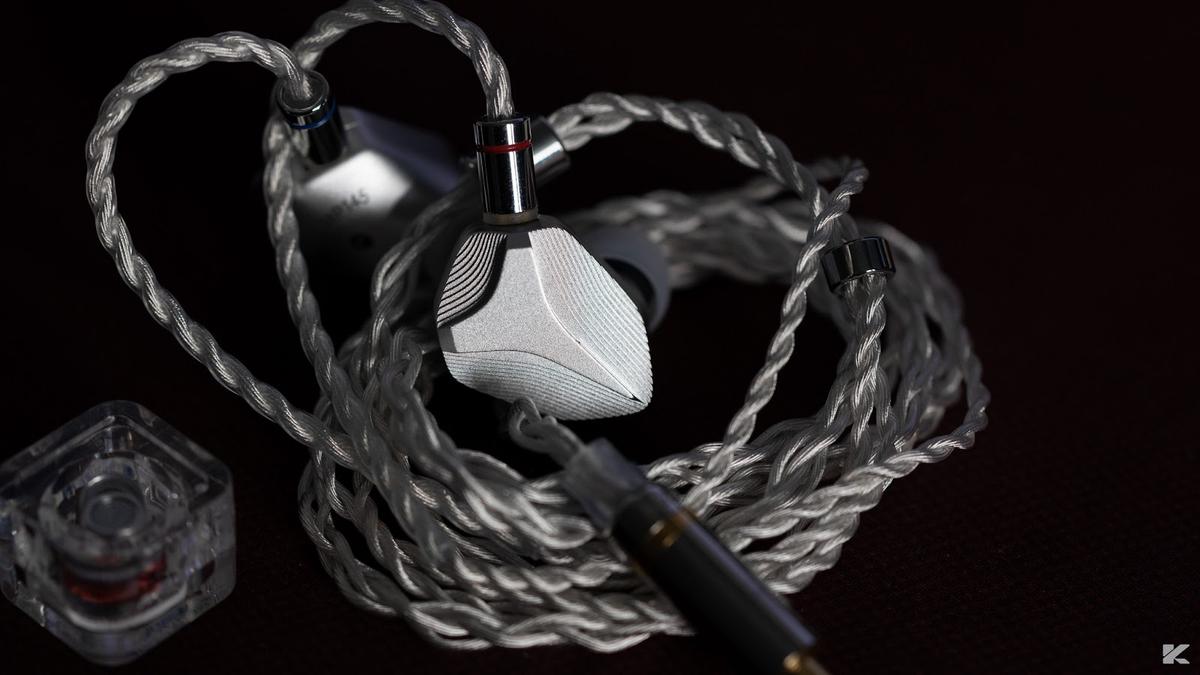Hidizs’ debut planar magnetic IEMs are some of the best of their kind.
Hidizs is fairly late to the planar magnetic game. It’s been nearly two years since the 7Hz Timeless were released. There were planar magnetic IEMs before the Timeless, but none created so much disruption and attention.
There are perks to being a late joiner since most of the “teething” problems should be solved. The extra time means you can assess the risks and rewards, offer more competitive prices, and (at times) even better “finished” products.
- Excellent build
- Stock cable and ear tips are good enough to get going
- Very good resolution and separation
- Bass has good physicality and planar speed
- Mids are not shouty or shrill with the reference and bass filters
- Filters make subtle but well-executed tuning changes
- Overall good price-to-performance ratio
- Plastic packaging contradicts the environmentally aware marketing campaign
- The faceplate has sharp edges
- Fit can be bulky for smaller ears
- Transients can sound over-dampened with the bassier filters
- Planar timbre
- Microdynamics could be better
Hidizs is also teaming up with the WDC (Whale and Dolphin Conservation) to donate some of the sales proceeds for the cause – a great initiative.
Good intentions alone are not enough, however, as the MP145 have much to prove before they are worthy of my recommendation.
Unboxing and First Impression
Technical Specifications
- Form: IEM
- Drivers: 1 x 14.5mm planar magnetic driver
- Impedance (Ohm): 30 ohms
- Sensitivity (dB): 104 dB/mW
- THD+N: 0.5±0.1%
- Frequency Response (Hz): 20 Hz – 40 kHz
- Removable Cable: Y
- Source Jack: 3.5mm or 4.4mm
- Cup/Shell Jack: 0.78mm, 2-pin
- Weight: 19g
Packaging
The packaging is rather fancy in typical Hidizs fashion, and this is where I have my first qualm. The entire box is plastic, not cardboard, which is more common nowadays.
I am fairly certain that extra plastic waste is the last thing the ocean needs.
I hope Hidizs walks the walk and opts for more environmentally friendly packaging next time.
In the box
- Hidizs MP145 IEMs
- 9 pairs of silicone tips (3 pairs of narrow-bore, wide-bore, and medium-bore each)
- Carrying pouch
- Single-ended or balanced (4.4mm) cable
I usually need to tip-roll IEMs, but on the MP145 the stock tips are good enough. I prefer the balanced tips with the stock filters.
The carrying pouch is basic and offers little protection from falls but is roomy enough to accommodate both the IEMs and the filters.
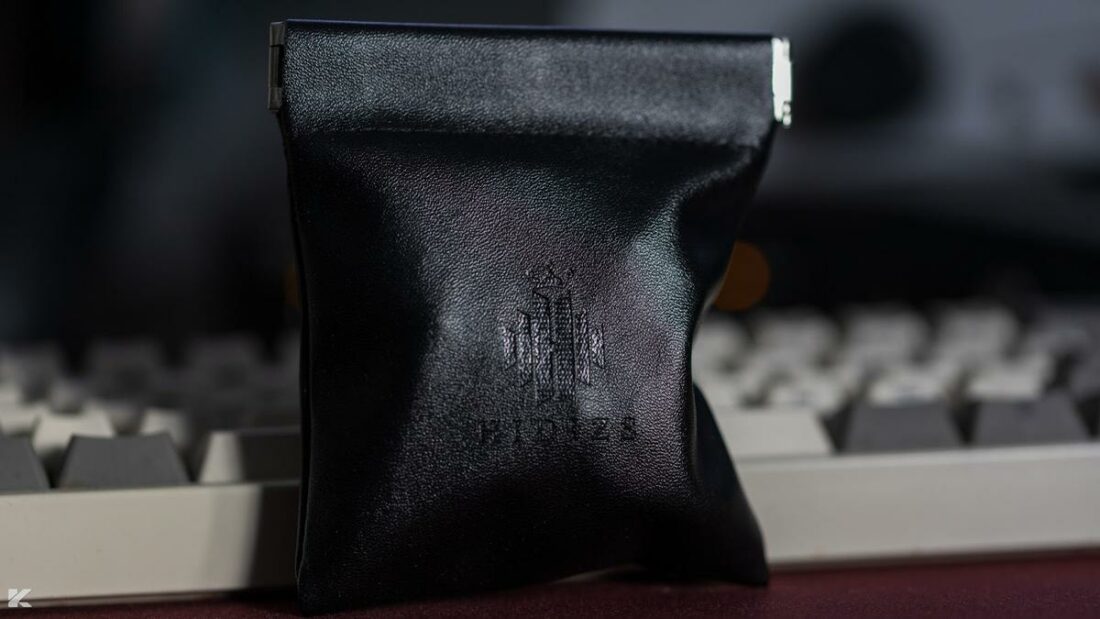
The stock cable is a 4-core 6N silver-plated monocrystalline copper cable with 3.5mm or 4.4mm termination. I like this cable and never feel the need to go for an aftermarket one.
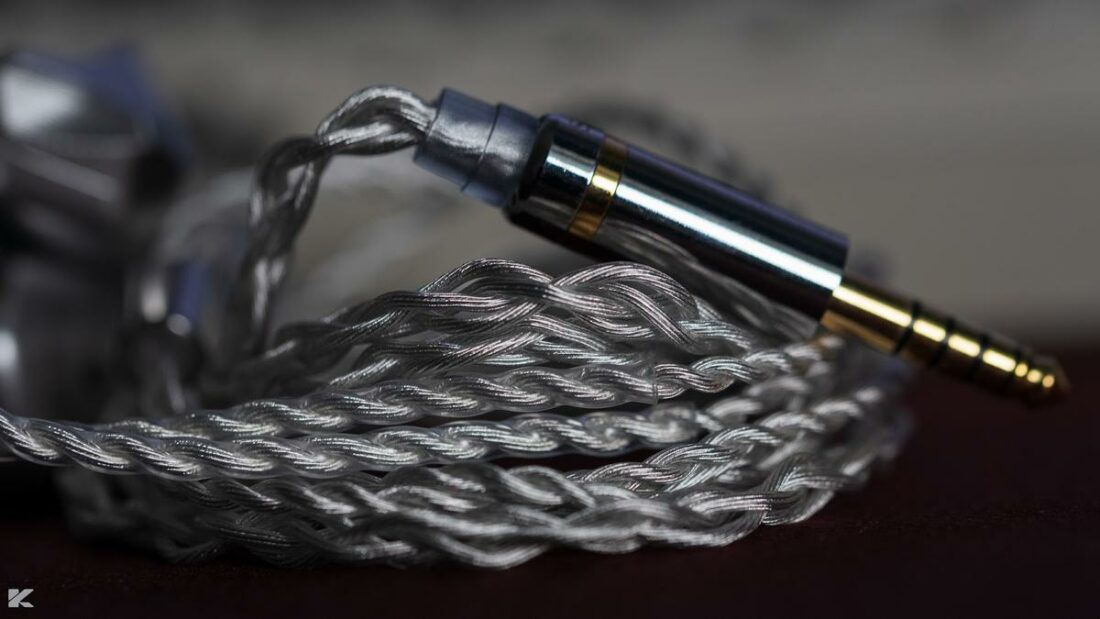
All in all, these are very good accessories, with the plastic packaging being my sole point of contention.
Design
The Hidizs MP145 have a rugged metal build that feels substantial when worn.
The all-aluminum chassis has a “whale fin” inspired backplate design. The stairstep pattern adds some flair to the design and makes the MP145 stand out, but the edges are sharp and can be uncomfortable.
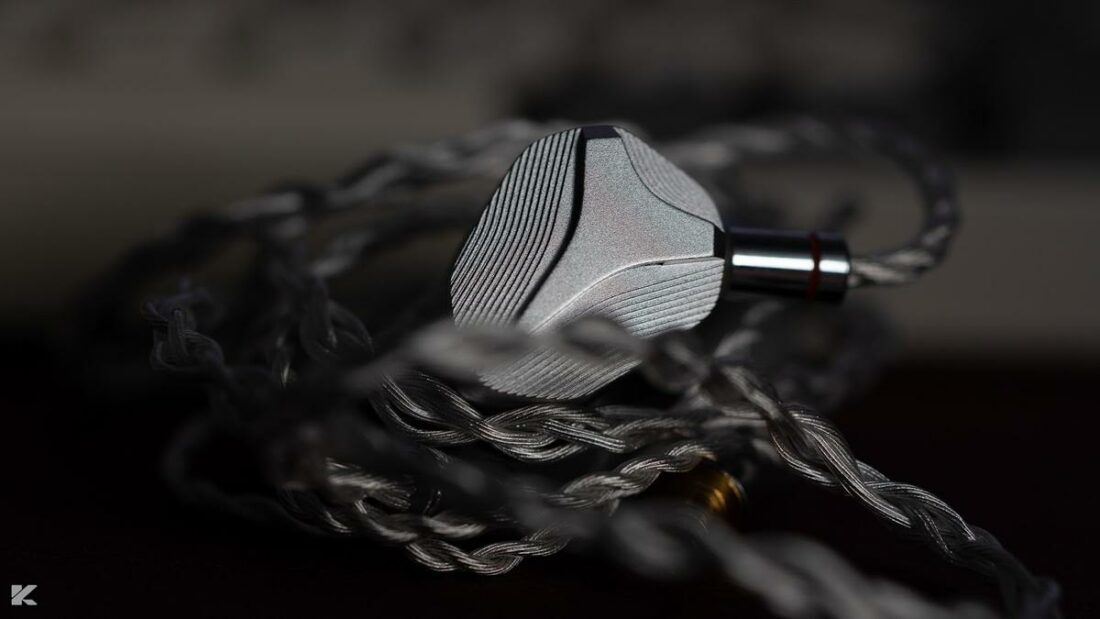
There are two vents: one near the nozzle and another on the faceplate. There is no pressure buildup when wearing the MP145.
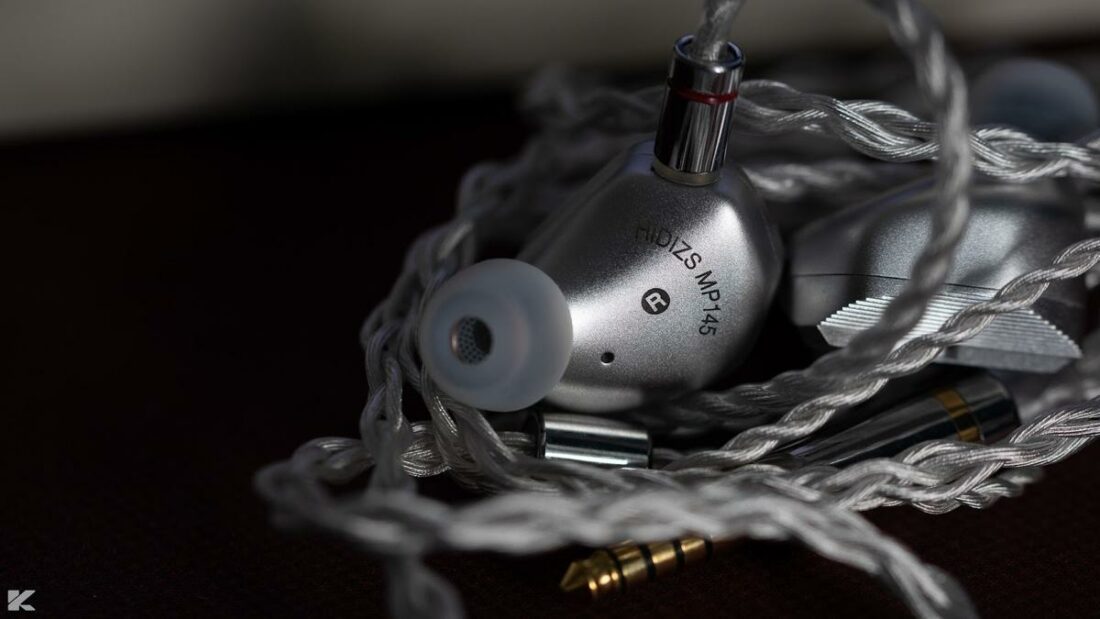
Finally, the 2-pin port is flush to the chassis, which is not my preference.
Comfort and isolation
Comfort can be an issue with the MP145 as the large shells do not sit flush with the ears, resulting in a less-than-snug fit. I also felt discomfort after hours of wearing due to the thick nozzle.
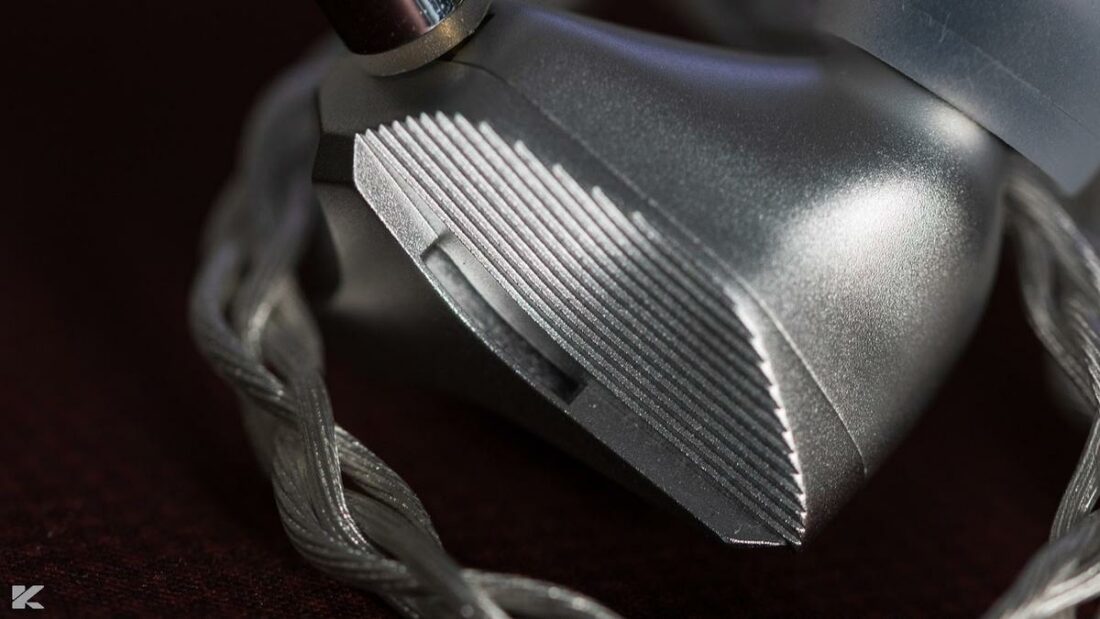
Isolation is above average due to extra venting on the shell.
Internals
The Hidizs MP145 use a 14.5mm planar magnetic driver with a dual-sided magnet array.
Since this particular driver type has become popular lately, companies differentiate themselves via various damping schemes that add an audible difference in the sound and overall tuning.
Hidizs MP145 Sound
The Hdizs MP145 have a U-shaped tuning with added focus on sub-bass frequencies.
Hidizs advertises that the MP145 is close to the Harman 2019 V2 target, which is accurate if you only consider the 500 – 1000Hz region. The rest of it deviates quite noticeably, albeit not negatively.
Also, keep in mind that the MP145 will sound different based on which filter is applied, so picking the right filter is essential during audition.
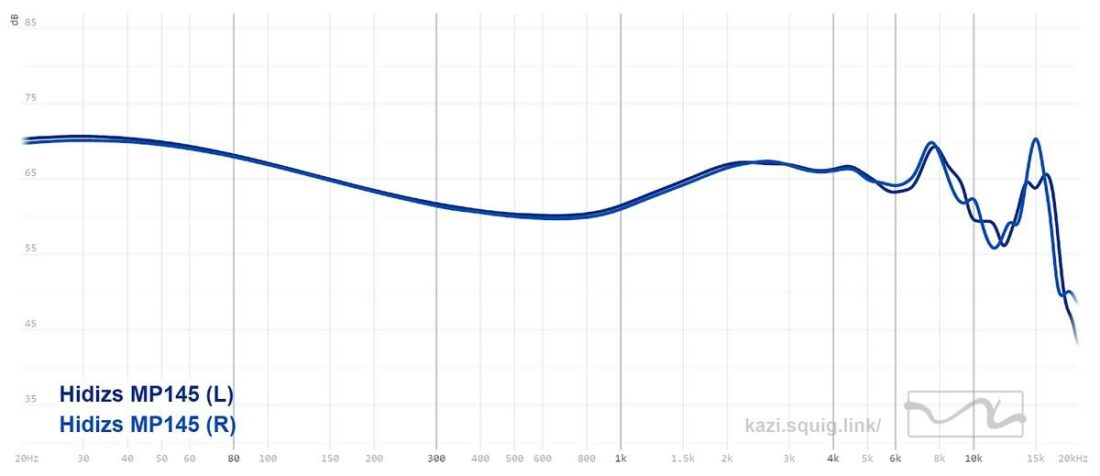
Bass
The MP145 have fairly dense and punchy bass, but the speed is lacking slightly due to some added damping in the balanced and bass filters. The “treble” filter has faster bass, but the slam and body are missing.
In the end, I prefer the balanced filter’s bass response, which offers dense, rumbly bass without sounding too slow or blunted.
Midrange
The mids are safely tuned on the MP145.
Due to some recession in the lower-mids, male vocals can sometimes sound distant. Female vocals are not shouty due to a relatively reserved pinna gain of about 7dB on the balanced filter. The treble filter has a slightly higher gain but is still not in shout territory for me.
String instruments have adequate “bite” in the leading edge of notes, as heard on Damien Rice’s Canonball. The timbre of string instruments could be better, however, since there is a metallic “sheen” to the notes.
Overall, well-tuned mids that are not overbearing or too drowned out.
Treble
Treble on the Hidizs MP145 could do with more extension.
Also, the 5kHz peak is something many planar magnetic IEMs have, and the MP145 are no exception. This peak exacerbates the timbral issues that I raised earlier.
Airiness is there mostly courtesy of a spike near 14kHz, which can be fatiguing in tracks with heavy cymbal hits. However, such instances are not too common in most Pop and Classical tracks, so you should be fine if your playlist isn’t mostly Metal and Rock music.
Soundstage and imaging
All current-gen “efficient” planar magnetic driver IEMs tend to have a narrow soundstage, which is also mostly true for the MP145.
The stage may seem wide, but that’s due to the recession in the lower-mids. In reality, cymbals and hi-hats are much closer to the listener than they should be. Stage depth is fairly decent, while the stage height is good, thanks to the large driver.
Imaging is better than staging, with instruments having well-defined cardinal positions. Ordinal placement is also better than average, albeit certain competing IEMs fare better in this regard.
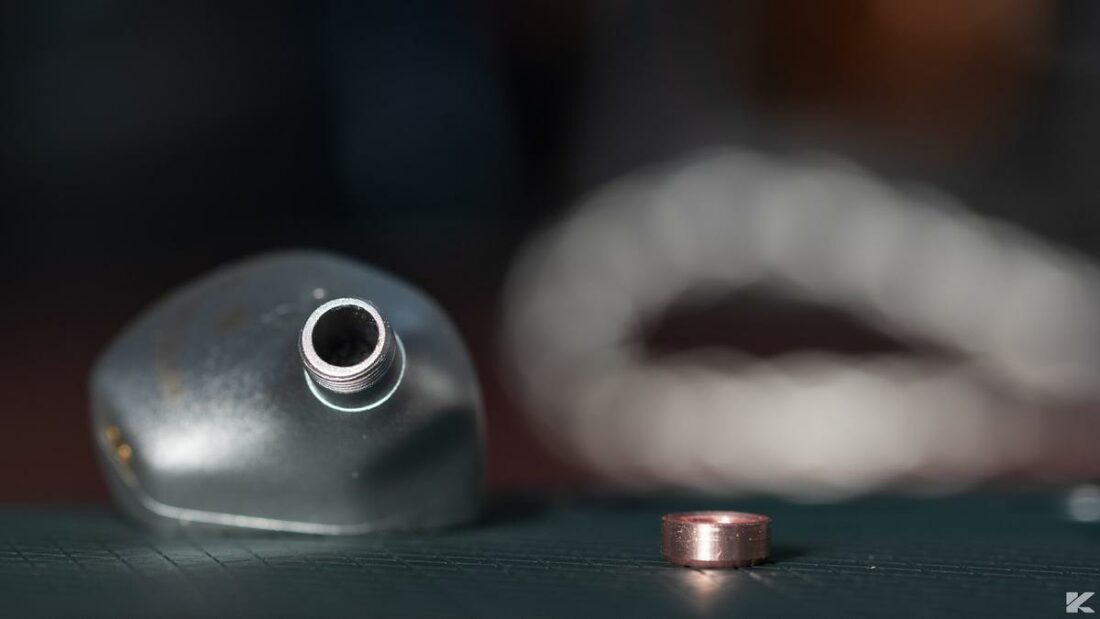
Dynamics and speed
Macrodynamic punch is well reproduced, as sudden drops in bass or crescendos maintain their dramatic nature.
Microdynamics are middling, as the excessive sub-bass masks low-level details and subtle shifts in volume.
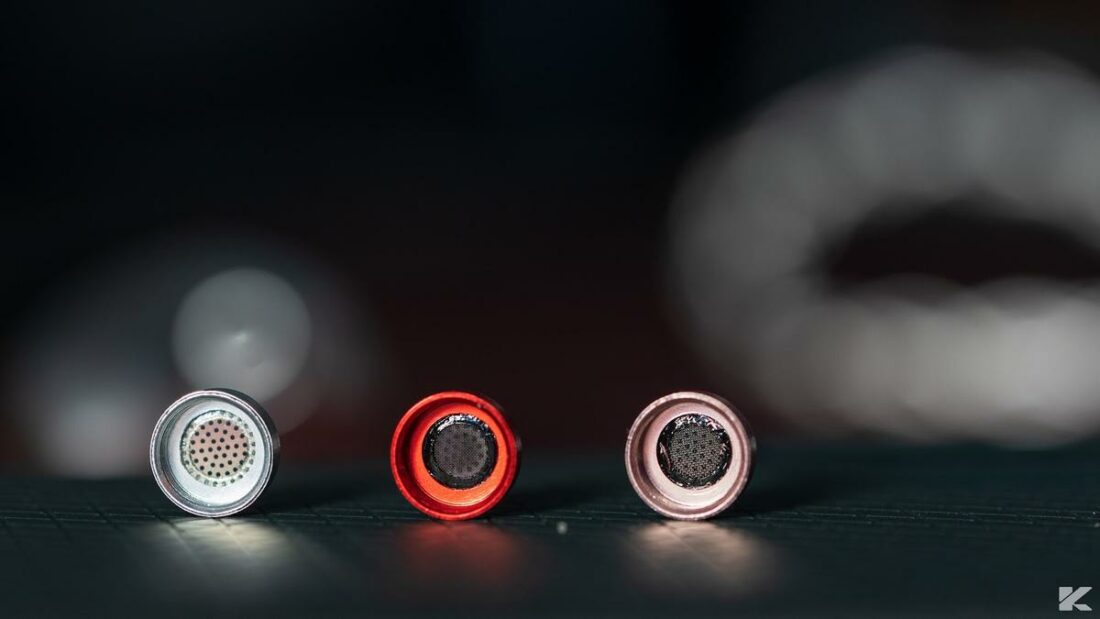
Comparisons
Vs Dunu Talos
The Dunu Talos are priced slightly higher than the MP145 but come with better accessories overall. Moreover, they have a switch to activate the BA driver, which can add even more treble to the mix if that’s your thing.
Comfort is a big win for the Talos due to a more ergonomic shape and lighter weight. The nozzle is thinner than the MP145 as well.
As for the sound, there are noticeable differences in the tuning. The Talos are lighter on bass and more focused on the midrange and treble frequencies. However, the bass is noticeably faster on the Talos, while the MP145 have better rumble and slam.
Mids are more forward on the Talos, but there is no shoutiness despite a more aggressive pinna gain. Lower mids sound more even and tonally correct on the Talos.
Treble is where these IEMs differ the most. Dunu manages to suppress the 5kHz peak and handles upper-treble better – resulting in better timbre. The MP145, meanwhile, offer more airiness up top at the cost of fatigue.
Microdynamics are better on the Talos, and macrodynamic punch is more visceral on the MP145. Imaging is about the same on both, while staging is slightly deeper on the Talos.
Overall, for punchier, more physical bass – the MP145 are the better pick. The Talos would be a better fit for those looking for a reference tuning, relatively flat bass response, and more resolution.
Where to Buy
Conclusion
The Hidizs MP145 are perhaps the best IEMs Hidizs has released so far. I have tried nearly all of them, and in terms of tuning, the MP145 remain the most balanced in the lineup.
However, there are still improvements to be made, and I hope in future models, Hidizs can make the lower-treble sound smoother while the upper-treble peak is handled more gracefully.
All that being said, the MP145 get a lot right. The bass has a fun tuning, the mids are inoffensive, and you need to pay quite a bit more for superior resolution. Thus, the MP145 earn my recommendation if you are planning to purchase your first-ever planar-magnetic IEMs. Hidizs is late to the party, but it is here to stay.
